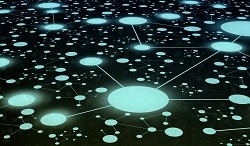Enhancing two-dimensional quantum simulation
Our world at the level of individual constituents of matter is governed by quantum mechanics. Within this, the field of quantum many-body physics investigates the interactions of particles with each other according to these laws. These systems include, for example, interactions between magnetic particles in a solid. Though scientists know the basic equations that describe these interactions, analysing them in detail is challenging, and simulating them exactly – even on supercomputers – is impossible. Quantum simulation uses well-controlled experimental systems to gain insights into this complex area of physics. These simulators encode information in a series of quantum systems known as qubits, which require remarkable control over individual atoms. The SPICY(opens in new window) project, which was funded by the European Research Council(opens in new window), designed and developed a new quantum simulator to explore and investigate the dynamics of many-particle problems. The device is a 100-particle quantum simulator, which can look at particle interactions in two dimensions, rather than just one. “This opens up the possibility to study certain quantum many-body physics phenomena, which at the level of 100 particles is already out of reach for exact numerical methods,” explains Christian Roos(opens in new window), senior scientist at the Institute for Quantum Optics and Quantum Information at the University of Innsbruck(opens in new window) and principal investigator on the SPICY project.
Building a two-dimensional system
The team had two motivations to develop their two-dimensional system: to scale up to a larger number of particles, and to deliver two-dimensional geometry of the constituents. “Theorists have developed techniques for calculating the ground states of one-dimensional systems with very large numbers of particles,” adds Roos. “For two-dimensional systems, such methods are not available to the same extent.”
An experimental platform for many-body physics
Trapped ions are used as an experimental platform for investigating quantum many-body physics. There are several ways to trap ions, using electric fields in different configurations, all with pros and cons. SPICY’s experimental platform uses a radio frequency trap, employing electric fields to confine ions. The team set up a trap designed to trap planar ion Coulomb crystals(opens in new window), unusual states of matter which can be treated as one quantum mechanical system in the form of a lattice. This device can be tuned to trap ions in two dimensions, rather than single threads. The trap is a microstructure comprising one single piece of gold-coated fused silica, with different electrodes to enable precise control of the potential in which these ions crystals are located.
Testing the experimental device
Once built, the next step was to run experiments using the new device. Initially the team were concerned, as the arrangement of planar iron crystals is not fixed, which risked them colliding with other atoms and making meaningful experiments impossible. The team found ways of overcoming this difficulty by fine-tuning the parameters of the device. Another important step in the project was to demonstrate that collective modes of motion can be cooled to the lowest quantum states. “We then started to couple internal energy levels of the ions and then engineered entangling interactions between the particles,” notes Roos.
Towards meteorologically useful quantum states
Beyond the main results, the researchers also started using the device for ‘spin squeezing’, a technique where quantum states can be created to be meteorologically useful. “This is a novel part of the quantum physics experiments we have been doing,” says Roos.







